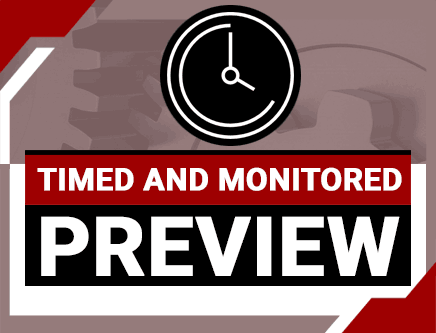Electric Power Metering for Single- and Three-Phase Systems (Ohio Timed & Monitored Video)
Credit: 4 PDH
Subject Matter Expert: Graham Van Brunt, P.E.
In Electric Power Metering for Single- and Three-Phase Systems , you'll learn ...
- The fundamentals of Electric Power
- How to meter a 3 Phase 4 Wire Load ("Y" Connected) and a 3 Phase 3 Wire Load (Delta Connected)
- The role of instrument Transformers (Current and Voltage CTs and PTs)
Overview

To meet the Ohio Board's intent that online courses be "paced" by the provider, a timer will be used to record your study time. You will be unable to access the quiz until the required study time of 215 minutes has been met.
Credit: 4 PDH
Duration: 215 minutes
Other than theoretical, simple power calculations in a system, engineers and technologists may not be familiar with the standards and practical installation that are required in today’s power billing. This course closes that gap and introduces how utilities deal with measuring power and energy, developing two-wire Single-Phase, three-Wire Single-Phase, 3 Phase 4 Wire ("Y" Connected) and 3 Phase 3 Wire (Delta Connected) Metering installation Standards.
This course concentrates on the electricity meter, electric meter, electrical meter, energy meter, or kilowatt-hour meter which is a device that measures the amount of electric energy consumed by a residence, a business, or an electrically powered device.
From the Electric utility perspective, electric meters installed at customers' premises for billing and monitoring purposes are examined. The typical calibrated in billing units are developed, the most common one being the kilowatt-hour (kWh) and how they are read once each billing period. Electric meter or energy meter measurements and the total power consumed over a time interval are examined. If desired, some meters may measure demand, the maximum use of power in some interval. "Time of use" metering allows electric rates to be changed during a day, to record usage during peak high-cost periods and off-peak, lower-cost, periods. Single-phase and three-phase metering measurements are also covered.
Specific Knowledge or Skill Obtained
This course teaches the following specific knowledge and skills:
- An overview of AC and DC Power
- Voltage Current, and Power Vectors (Phasors)
- Capacitive and Inductive Loads
- Real Reactive and Apparent Power (Watts, Vars, VA)
- The Dynamometer Wattmeter
- The Energy Meter
- 3-Wire, Single-Phase Metering
- Polyphase Energy Meters
- 3-Wire, Single-Phase Metering with CTs and PTs
- Metering Measurement Standards
- Blondel’s Theorem
- Phase and Line Relationship
Certificate of Completion
You will be able to immediately print a certificate of completion after passing a multiple-choice quiz consisting of 20 questions. PDH credits are not awarded until the course is completed and quiz is passed.
| This course is applicable to professional engineers in: | ||
| Alabama (P.E.) | Alaska (P.E.) | Arkansas (P.E.) |
| Delaware (P.E.) | District of Columbia (P.E.) | Florida (P.E. Area of Practice) |
| Georgia (P.E.) | Idaho (P.E.) | Illinois (P.E.) |
| Illinois (S.E.) | Indiana (P.E.) | Iowa (P.E.) |
| Kansas (P.E.) | Kentucky (P.E.) | Louisiana (P.E.) |
| Maine (P.E.) | Maryland (P.E.) | Michigan (P.E.) |
| Minnesota (P.E.) | Mississippi (P.E.) | Missouri (P.E.) |
| Montana (P.E.) | Nebraska (P.E.) | Nevada (P.E.) |
| New Hampshire (P.E.) | New Jersey (P.E.) | New Mexico (P.E.) |
| New York (P.E.) | North Carolina (P.E.) | North Dakota (P.E.) |
| Ohio (P.E. Timed & Monitored) | Oklahoma (P.E.) | Oregon (P.E.) |
| Pennsylvania (P.E.) | South Carolina (P.E.) | South Dakota (P.E.) |
| Tennessee (P.E.) | Texas (P.E.) | Utah (P.E.) |
| Vermont (P.E.) | Virginia (P.E.) | West Virginia (P.E.) |
| Wisconsin (P.E.) | Wyoming (P.E.) | |


 Live support chat
Live support chat



